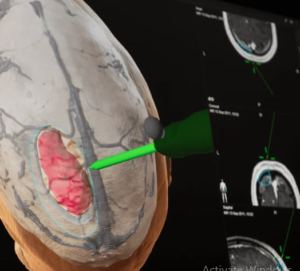MRI Innovations in Neurosurgical Robotics and Navigation Systems: Advancing Precision and Safety
Neurosurgery has gone through a sea change in the last couple of decades, with the introduction of various MRI technologies within robotic systems. Such innovations raise precision within surgical procedures and further benefit patients. Such a marriage of real-time imaging with robotics thus enables surgeons to navigate with better precision through complex brain anatomy, hence allowing surgeries to become much more successful.
New MRI-compatible robotic systems are transforming the art of neurosurgery by redefining the way neurosurgeons plan and perform their procedures. Such systems allow for highly detailed intraoperative imaging without additional procedures, hence minimizing risks from traditional techniques. Also, patients recover faster with fewer complications.
The future for neurosurgical robotics indeed looks bright, as studies continue to refine these technologies further. As these systems continue to evolve, they have great promise for assisting surgeons in devising safer and more effective treatments for patients with neurological disorders.
Key Takeaways
- MRI technology increases accuracy in neurosurgery.
- Robotic systems complement live imaging during such surgery.
- Patients recover faster and with fewer complications.
Advances in MRI-Compatible Robotic Technologies
With respect to neurosurgery, there have been significant developments in MRI-compatible robotic technologies. These developments enhance surgical precision, improve imaging capability, and facilitate workflow. Real-time imaging integrated with robotics is changing the face of how surgeries are performed.
Integration of Real-Time Imaging and Robotics
Real-time imaging provides surgeons with the ability to see exactly what they are doing at any given moment during surgeries. MRI-compatible robots may integrate live images to steer them in performing tasks correctly and minimizing error, while avoiding critical structures.
Because of MRI, the surgeons have better visualization. The robot makes adjustments to its movements in relation to the newest scans as the surgeons go about their operations. This immediacy yields much better patient outcomes and recovery times.
High-Precision Navigation Systems
Accurate neurosurgery cannot be performed without high-precision navigation systems. MRI-compatible systems have good mapping of the brain. They track the place of the instruments within specific algorithms.
These systems allow for more focused interventions; surgeons succeed in their way with precision through difficult regions due to real-time visualization of the anatomy. This ability minimizes trauma to the tissues surrounding the area.
Navigation tools assist during the planning phase by making better predictions of what challenges might be expected in surgeries, thereby strategizing accordingly. Good-quality navigation systems are highly essential to ensure successful procedures on such tough cases.
Automated Workflow and Procedure Planning
Efficient workflow automation enhances ease in the operating room. MRI-compatible robotic systems accomplish repetitive tasks much faster and more accurately. This reduces workloads on surgical teams so that they can better concentrate on more important aspects of surgery.
Procedure planning is aided with automated systems. The automated tools will analyze the patient’s data in recommending the best surgical approach. They may also help team members communicate with each other well, ensuring all are on the same page.
This would mean that with some automation of tasks, operation times could be reduced in hospitals. It follows that improved resource utilization and lower operation costs are realized. Automation thus has the potential to ensure better patient care and outcomes.
Clinical Applications and Outcomes
Advances in MRI have an extensive impact on neurosurgery. These improve accuracy and safety during surgery, enable patient-specific planning, and enhance postoperative assessment.
Accuracy and Safety of Surgery
MRI-guided neurosurgical robots relate to high-precision imaging during surgery. Surgeons can view areas of operation in near real time.
Some of the advantages derived from this modality include the following:
Less injury to healthy tissue due to precise targeting,
Less invasion due to the availability of better imaging, which means smaller incision hence, the possibility of quicker recovery.
Surgeons are able to make real time adjustments as MRI will produce an immediate feedback on anatomy being treated
These factors contribute to better patient outcome and assurance of surgical confidence.
Patient-Specific Surgical Planning
With customized surgical planning, a unique operative plan is developed for a given patient. In great detail, MRI images define the brain’s structure and abnormalities.
Key benefits include:
- Personalized strategies: Surgeons can preplan the operation based on the exact anatomy of the individual patient.
- Informed decision-making: Complete knowledge of exactly where, and what type of problem exists will inform the technique of choice.
- Practicing simulation: Physicians are able to practice surgery on 3D models generated from MRI studies.
This level of preparation helps to ensure the highest success from the surgery.
Postoperative Evaluation and Follow-up
Follow-up studies after surgery are important for monitoring the process of recovery. MRI is especially useful in assessing surgical outcomes.
Important aspects include:
- Evaluation of outcome: These follow-up studies identify residual states or complications.
- Early detection: MRI often detects the problem at an early stage so that interventions could be done early.
- Progressive monitoring: Periodical imaging helps to document the process of healing.
- All these assessments lead to better long-term outcome and good care of patients.

Also Read :
- The Role of MRI in Cranial Nerve Disorders and Neurosurgical Treatment
- MRI for Neurosurgical Management of Trigeminal Neuralgia
- Intraoperative MRI in Complex Neurosurgical Cases
- Neuroimaging and Neurosurgical Approaches to Stroke Recovery
- MR Angiography in Neurosurgical Management of Vascular Malformations
